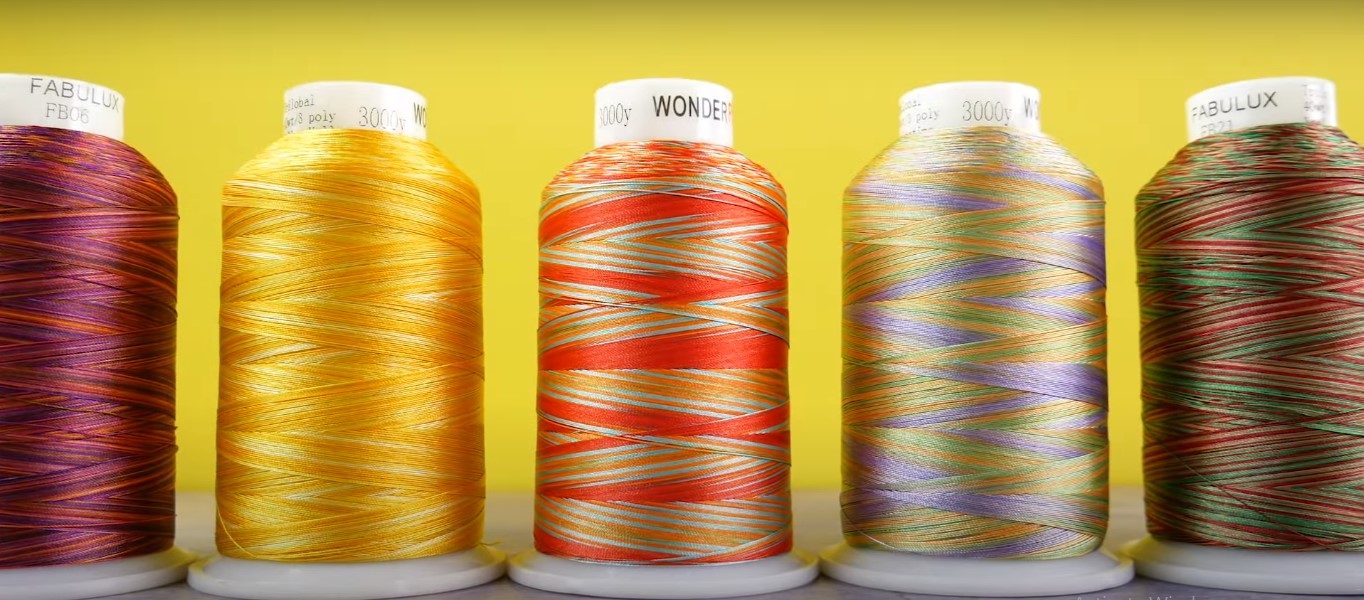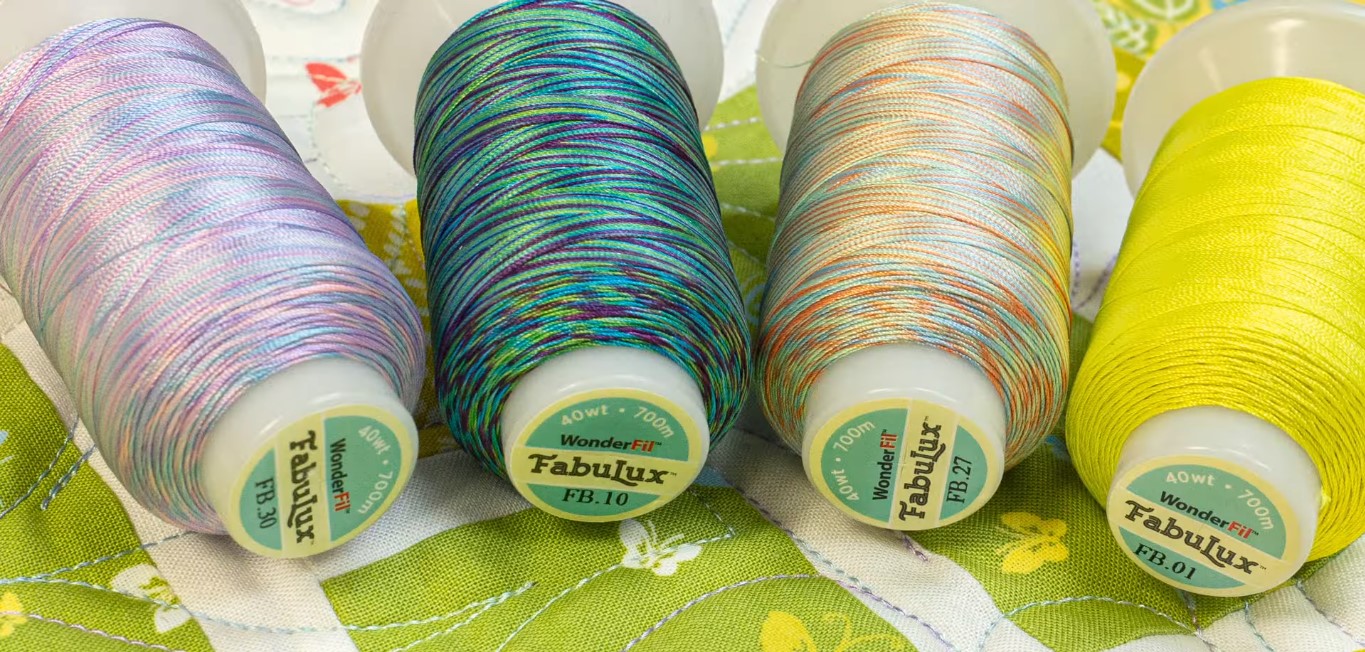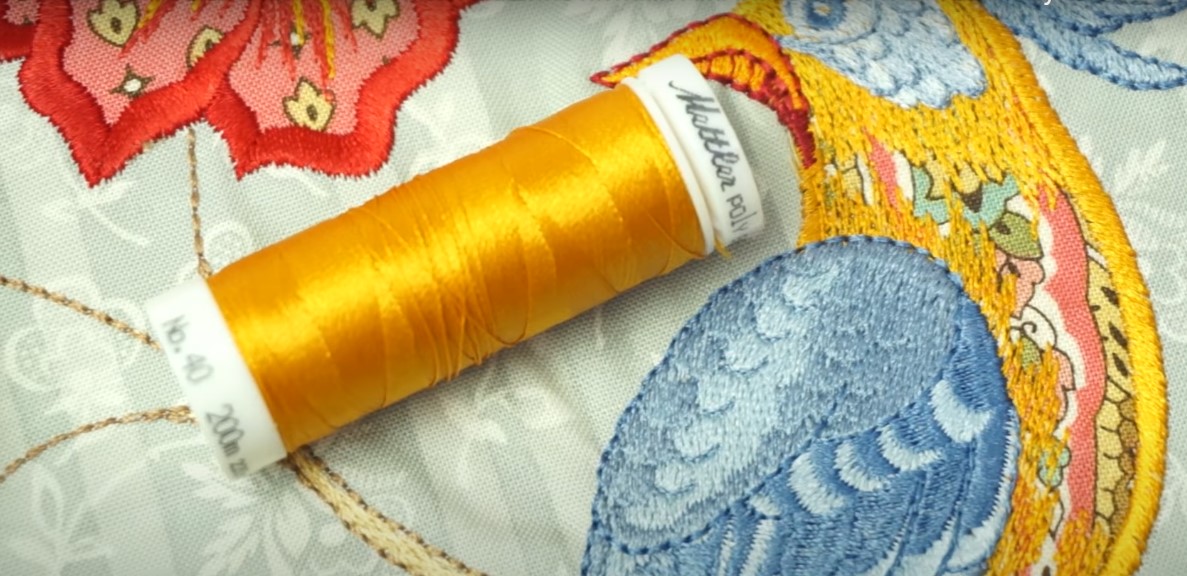Machine embroiderers have this ongoing love-hate relationship with threads. They leave you frustrated at times, with frequent breaks, but now come on, they literally define you. After all, threads are, paint to your art. And now that we are talking about art, how about alleviating the bar by using specialty threads with machine embroidery designs?
Most machine embroiderers start with standard polyester and rayon threads. Since they are employing it day in and day out, they gradually become adept at controlling and bringing the very best out with machine embroidery designs.
Over time, embroiderers are able to play with colors, textures, sheen and are able to add more depth to their designs.
But no matter how good you are at mixing things up, there still are limitations to what one can achieve with standard threads.
Moreover, if you are a machine embroiderer with artistic instincts, standard threads can become boring and your creative buds will soon be dried out, leaving you craving for something more interesting and creative. Well, there you go specialty threads…
Allow me to say that the term ‘specialty threads’ is pretty generic and it fails to encapsulate the range and scope of what these threads have actually got to offer. The range of colors, textures, depth and other effects that you can achieve with specialty threads is just immense. Once you start and get familiar with a particular specialty thread, you will eventually figure out more ways, in which you can add personal flair to designs.
There is a whole range of specialty threads available out there and to cover all of them, is beyond the scope of a quick blog post. However, we will be shortly plunging in to see different types of specialty threads and how to exercise control while using them in machine embroidery designs.
Multiple Color Shades:
The first type of specialty threads are the ones which allow you to use multiple shades of the same color in a design element. These specialty threads are generally used to render a striped structured design with multiple shades.
There are various variants of these types of specialty threads. Each one differs slightly from the other, and thus, leaving limitless possibilities to the embroiderer. The most common type is the variegated thread (Yes, the ones you see in the design above!)
The problem with a lot of options is that they can easily leave one confused. But another major, and an apparently bigger problem, with these threads, is that they are unpredictable. As an embroider it is difficult to exercise control over a design with shifting starting and finishing points of striped elements. You are never sure that which areas of your design will be dark or light by the end of it and this is what hinders their widespread acceptance.
Another type of unconventional coloring threads are the ones that are made up by joining smaller threads of different colors. Contrast considerations of constituting colors do play a part in preparing these spools.
Thickness Specialty Threads:
The most common type of thread that machine embroiderers resort to is the 40wt thread. We see it all the time and we, at times, too cringe over this obsession of embroiderers. But this obsession is not wholly unreasoning. It provides the optimal thickness (not too thick and not too thin) which is just good enough for most machine embroidery designs.
Nevertheless, we do get to see some deviations here and there. In fact, our next mention is not rare by any standards. You guessed it-we are talking about 60 wt thread. Thinner than the 40 wt thread by about 25%, it is employed when a design requires entailing fine details. Moreover, the use of 60 wt thread is also pretty prevalent in micro lettering.
It can easily take care of minor details in designs.
As a machine embroiderer, there are some small fixes that need to be made when using a non-standard thread. For instance, when you are using 60 wt thread, the stitch density has to be approximately 25% less than what is used with 40 wt thread. Moreover, needle size also has to be adjusted accordingly. In this case, it has to be a smaller needle. A 65/9 needle size generally goes great with it.
A 60 wt thread is used for fine details but what when we are talking about larger areas? A 30 wt thread is the go to option for most machine embroiderers in this case. It requires a lesser density and a larger needle to control the thicker thread efficiently.
Sheen And Finish Specialty Threads:
Specialty threads can either be used to either achieve glow-ish or dimmer machine embroidery design. As you can expect, the flat and even outlooks are comparatively less popular but it is always great to have more options as an embroider. The shiny and sheeny versions are prevalent, which often come with a smooth velvety look. On the other hand, a flat thread generally renders a matte and rugged finish.
The most popular sheen thread is undoubtedly the metallic thread. Require some bling and shine? They are almost always the answer.
Despite the fact, that metallic thread is one of the most difficult threads out there, there is nothing stopping its widespread use. Lined with aluminum, the bulky thread poses significant issues for a standard embroidery machine.
To combat these issues, here are some quick tips:
1. During embroidery digitizing, lower the density of design.
2. Increase the tension through tensioners as well as by increasing the cone(spool) to needle distance.
3. Use thread nets.
We recently published a detailed blog post on dealing with metallic threads. Check out the post below for an in-depth understanding to deal with issues posed by the metallic specialty thread.
See: 6 Ways To Deal With Metallic Thread And Embroidering Better Machine Embroidery Designs
Special Effects:
The use of these is most rare as compared to all other specialty threads. The cost, as well as the complications that, come along the way, special effects thread, offer little value when it comes to commercial machine embroidery designs.
To start off with, there is this specialty thread that will illuminate or gloom depending upon the light they are exposed to. On similar lines, there is this solar specialty thread which will appear differently when placed outdoors, than when placed indoors.
Important advice:
What stands embroidery out from other custom apparel technologies is its flexibility and dynamic nature. A machine embroiderer is never short of options when it is about coming up with most unique designs or embroidering on the most peculiar product. It is the dynamic nature of embroidery which keeps it always enticing.
The domain of a machine embroiderer is therefore massive. The only key is to know and practice different variations and make the adjustments that have to be made while dealing with a particular design, thread or apparel. Similarly, apart from the process, make sure that you communicate with your embroidery digitizer appropriately. Tell them about what you want and be very clear in your communication with an embroidery digitizing service.
We are an embroidery digitizing service that has been around for the past 15 years. With our professional team of embroidery digitizers, we are serving machine embroiderers just like you every day.
Connect with us, discuss your needs and we are good to go!




